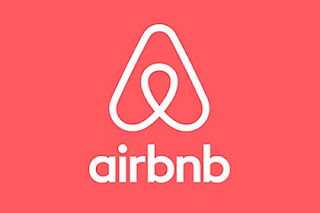By Jessica
Alvarez, Chief Management Officer
A few years back, I
was yearning for a community to embrace me, a tribe that would understand and
respect that I’m not just a few general categories of a person, including
female, Latina, mother. I needed a community outside of my corporate life that
understands that the indigenous roots in me are not only from the Americas but
can be traced back to slave trafficking from Africa to the coasts of the
Caribbean, central and south America. My grandmother’s knowledge of the use of
roots, herbs, and plant medicine has been passed down the generations through
song and story.
In my search for such
an embracing community, I found Centro Ashe, now the Wild Ginger Center in Washington
D.C., which shares, protects, respects, and promotes the connections between
plants, earth, and people. I enrolled in their training program to spark and
renew the love and knowledge of plants I had in me.
Yes, it sounds very
urban hippy, right? The first day I was amazed to be surrounded by an
astonishingly diverse group of people, all coming together to learn and share
experiences. Here, I didn’t need the emotional and mental protective walls I
habitually built around me.
With my corporate and
human capital lens, I tried to analyze the reasons for such “diversity
success.” They didn’t use a sophisticated recruiting system with algorithms
tweaked to maximize diversity. The curriculum was the same for everyone. The
setting was a barn on a small farm. Yet, the diversity success was evident with
race, ethnicity, creed, preferences, identities, age, careers, education, and
social-economic levels all in one room, ready to learn. Everyone showed up with
a smile and open to an embrace. Cell phone connection was awful, the
conversation was great, and we all had meals together where we learned about
each other’s families, interests, and even dreams. It struck me how different
this was from work and school settings. Although there was a lot to learn and
do, there was ample room for each person’s personality and voice to shine
equally. They organically met the diversity and customer loyalty aspirations of
the corporate world.
After months of
enjoying the camaraderie, I concluded that the Wild Ginger Center’s secret
ingredient for their diversity success is the kindness and respect that runs
through its core. Empathy and respect not only for the plants and the earth but
for people. Each person that walks into the center is unique, respected,
acknowledged, encouraged, and celebrated for showing up as who they are.
By the time the
workshops concluded, I had acquired lifelong friends, carpool mates,
herb/veggie exchange buddies, but most importantly, I found the tribe I yearned
for. I belonged.
Can we translate this success
to the corporate world? Yes! Below are my top 10 questions to ask yourself.
1. Is your mission clear?
2. What is the human connection to your work (the
back story of why we do what we do)?
3. Are people working with a purpose?
4. Is everyone’s uniqueness equally celebrated
and acknowledged beyond the basic categories?
5. As employers, are we creating safe spaces for
team members to connect beyond transactional tasks?
6. Does each employee feel encouraged to grow, to
say, to be?
7. Does every employee feel free to show up as
who they are (i.e., my big curly hair vs. straightened hair, my ethnic wear vs.
pantsuits and heels)?
8. Is respect and compassion part of your
corporate vocabulary?
9. Is diversity even valuable to your corporate
goals?
10. Are you aware of your company’s diversity
standing?
I can help you start
diversity conversations too. I’m pleased to announce DEI360, an organization’s starting
point for Diversity, Equity & Inclusion (DEI). It’s an
easy, customizable, online assessment that quickly allows organizational
leadership to see how they’re doing from the employee’s perspective. Once an
organization takes the assessment,( our team walks through the final report giving clear DEI data, a snapshot of
the internal DEI landscape, and actionable next steps. Have questions? Check out our FAQ or contact us directly.
Let’s
share experiences. Leave a comment below, send me an email,
or find me on Twitter.










.png)






